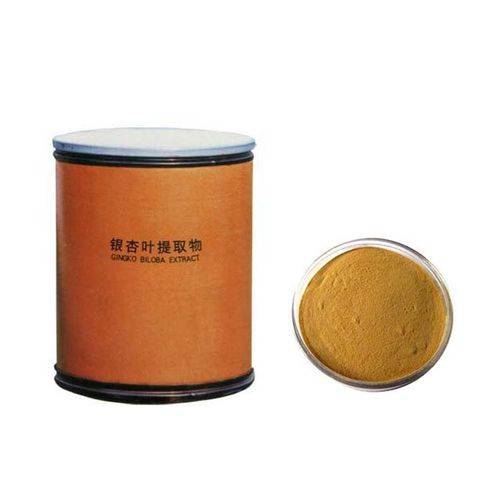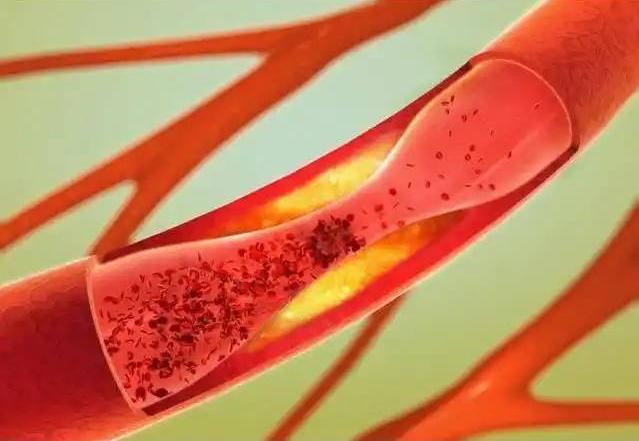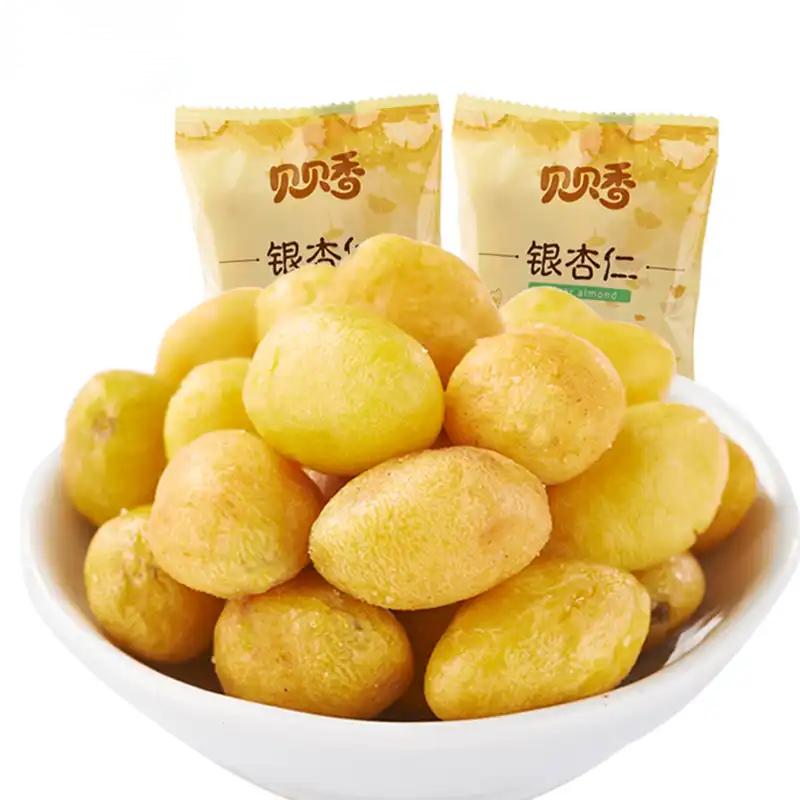Study on Ginkgo Biloba and Blood Pressure
China accounts for more than 70% of the world's ginkgo resources and is the main producer of ginkgo leaves. Ginkgo leaf extract is widely used in health foods, cosmetics and pharmaceuticals. Document Wei Fa Jian Fa [2002] No. 51 has included ginkgo leaf products in the list of food ingredients with similar medicinal properties. There are more than 470 food ingredient databases that involve ginkgo leaf products[1]. In particular, ginkgo preparations prepared with the EGB761 standard substance produced by the German company Schwab enjoy an international reputation, and ginkgo preparations are sold in more than 130 countries around the world. Its main health benefits include assisting in lowering blood lipids and blood pressure, boosting immunity, assisting in protecting against liver damage, improving tolerance to hypoxia, anti-oxidation, protecting the gastric mucosa, and improving memory. In the 1960s, European countries were the first to isolate the most representative functional components of ginkgo biloba, ginkgo flavonoids and ginkgolides.
Ginkgo flavonoids are natural free radical scavengers and vasodilators that play an important role in cardiovascular diseases. They reduce the damage to cells caused by excessive free radicals during cerebral ischemia and hypoxia and the aging process. They can be used to develop health foods that help lower blood pressure, regulate blood sugar levels, and fight atherosclerosis. Ginkgolides are currently the strongest platelet-activating factor (PAF) antagonists among natural medicines. They can effectively prevent atherosclerosis, platelet aggregation and thrombosis in the walls of blood vessels in the cardiovascular system, effectively improve the microcirculation of heart and brain tissues, protect central neurons, and improve the binding of neurotransmitters and receptors. Thus, they can improve age-related degenerative diseases and significantly improve memory. There are relatively few research papers on the efficacy of proanthocyanidins and organic acids. This article reviews the four main types of efficacy components of Ginkgo biloba extract (EGB) and their health benefits, as well as their application prospects.
1 Efficacy components of Ginkgo biloba
The research on the active components of ginkgo biloba has mainly focused on ginkgolides and ginkgo flavonoids. Other components such as proanthocyanidins and organic acids also have strong activity in terms of health benefits, and there is a synergistic effect between the active components. The main components and approximate contents of conventional ginkgo biloba extracts are shown in Table 1 [2].
1.1 Ginkgo flavonoids
Current research on ginkgo flavonoids focuses on the isolation and purification of individual compounds, structural identification and research into their physiological functions. A review of the literature has identified about 46 types of flavonoids, including 28 monomeric flavonoids, mainly quercetin, kaempferol, isorhamnetin, myricetin, luteolin, apigenin and their side chain-linked mono-, di- and trisaccharides [3-10]. There are 11 types of ginkgo bilobalide and 7 types of flavonoids [2, 11-15]. The specific structures are shown in Figure 1.
1.2 Ginkgolides
Ginkgolides are also one of the important functional components in ginkgo biloba extract. So far, the structures of ginkgolides A(GA), ginkgolide B (GB), ginkgolide C (GC), ginkgolide J (GJ), ginkgolide L (GL), ginkgolide M (GM), ginkgolide K (GK) and bilobalide (BB), the structures of which are shown in Figure 2 and Table 2.
Ginkgolide B is the most active type of ginkgolide, but it is only found in low concentrations in ginkgo biloba extract. It is therefore a research hotspot in recent years [16].

1.3 Proanthocyanidins
Ginkgo biloba proanthocyanidins are mainly composed of (epi)gallocatechin, which accounts for more than 85% of the composition, and (epi)catechins account for about 15%. The difference between the structure of (epi)gallocatechin and (epi)catechins is the extra -OH at the 5' position of the B ring, so there are also differences in the efficacy of these two types of compounds. Theoretically, (epi)gallocatechin has better activity than (epi)catechin. However, the structure and polarity of ginkgo flavonoids and their glycosides are very similar to proanthocyanidins, and it is difficult to isolate and purify proanthocyanidins, which is why there are relatively few research reports on them. The specific types are shown in Figure 3 [17-19].
1.4 Organic acids (OA) compounds
The content of carboxylic acids in a standard Ginkgo biloba extract is about 13%. Carboxylic acids can be divided into non-phenolic acids and phenolic acids. Non-phenolic acids include ascorbic acid, 6-hydroxycaninequinoline acid, D-gluconic acid, quinic acid and shikimic acid, etc. Phenolic acids include protocatechuic acid, hydroxybenzoic acid, vanillic acid, caffeic acid, p-coumaric acid, ferulic acid and chlorogenic acid. The concentration of organic acids in ginkgo leaves changes during different growth cycles [20-21].
2 Typical components and effects of ginkgo biloba extract
2.1 Antioxidant effect
In human metabolism, there is a dynamic balance and coordinated interaction between oxygen free radicals and lipid peroxidation reactions. This state can maintain normal body responses and immune responses in the body, otherwise it will damage cell membranes and lead to cell apoptosis [22]. Ginkgo flavonoid health care preparations can effectively remove free radicals, and ginkgolide health care products can resist lipid peroxidation. The two types of functional components have a synergistic inhibitory effect on oxygen free radical reactions and lipid peroxidation reactions, thereby exerting a therapeutic effect. Xiong Lidan et al. [23] studied the effects of ginkgolide and ginkgolide B on hydrogen peroxide-induced antioxidant damage and inhibition of inflammatory factors in human immortalized keratinocytes (HaCaT). HaCaT) antioxidant damage induced by hydrogen peroxide and the effect of inhibiting inflammatory factors. The results showed that EGB can effectively reduce the amount of superoxide dismutase (SOD), reduce the activity of glutathione peroxidase, and significantly reduce the amount of reactive oxygen species (ROS). Wang Weiwei et al. [24] studied the protective effect and molecular mechanism of ginkgo flavonoids on oxidative stress damage in human aortic endothelial cells (HAECs) induced by oxidized low-density lipoprotein. They found that flavonoid aglycones can significantly inhibit ROS synthesis, downregulate malondialdehyde (MDA) levels, and upregulate NO levels. Its antioxidant mechanism may be related to increased SOD and reduced reduced coenzyme II activity.
2.2 Anti-fatigue effect
Ginkgo biloba extract has been studied extensively as a health supplement in functional foods, but less research has been done on its role in the body's resistance to exercise-induced fatigue and improvement of exercise capacity. Schneider et al. [25] found using a meta-analysis that ginkgo biloba extract can enhance endurance performance in people with peripheral arterial disease. volunteers who took ginkgo biloba health products could increase their walking distance by 1.75 times, and the therapeutic effect on peripheral arterial disease was very significant. Wang et al. [26] showed that ginkgo biloba extract was used as a supplement in a 24-week double-blind experiment to investigate the effect on walking performance in patients with peripheral vascular disease. The subjects' walking ability on a treadmill, oxygen consumption during exercise, peripheral hemodynamics and blood viscosity were effectively improved. Zhang Z et al. [27] found that ginkgo plant health products can improve endurance performance in healthy volunteers and produce beneficial changes in related hormones. Compound ginkgo health products can increase oxygen consumption and enhance the body's resistance to fatigue.

2.3 Improving memory in the elderly
Degenerative diseases in the elderly, especially central nervous system diseases, increase significantly with age, mainly including forgetfulness, memory loss, Parkinson's disease, dementia and mild cognitive impairment [28]. EGB can intervene early to prevent or delay the onset of these diseases, and is an effective health supplement for preventing central nervous system diseases. Ginkgo flavonoids and terpene preparations are effective in preventing degenerative central nervous system diseases [29-31]. Zhang Hui et al. [32] found that ginkgo biloba extract significantly reversed neuroinflammatory responses, downregulated the expression of glial fibrillary acidic protein, macrophage specific protein, and nuclear factor κB protein, and significantly reduced TNF-α and IL-1β in rats in a dose-dependent manner after treating Parkinson's disease rats. Ginkgo biloba extract can improve the chronic neuroinflammatory response in the brains of Parkinson's disease rats and protect the dopaminergic neurons in the substantia nigra.
Li Jinfeng et al. [33] studied the therapeutic effect of Ginkgo biloba extract on Parkinson's disease mouse models of different ages. The results showed that the motor function scores, SOD and glutathione peroxidase activity, and cell optical density values of the mice in the treatment group were significantly increased, while the MDA content in the brain tissue was significantly decreased. Zeng et al. [34] used a homocysteine-induced Alzheimer's disease model to explore the early prevention, treatment and molecular mechanism of action of EGB on Alzheimer's disease. They found that EGB prevents and treats memory impairment in rats by regulating the activity of GSK-3β and PP2A.
2.4 Auxiliary hypotensive effect
Ginkgo biloba extract can lower blood pressure by increasing vascular tone, dilating coronary arteries, and improving vascular permeability [35]. Ginkgo flavonoids are the key active ingredients, Ginkgo flavonoids are the key active ingredients, and both ginkgo monomeric flavonoids and ginkgo dimeric flavonoids can promote coronary vasodilation. Mansour et al. [36] found that in a study of the antihypertensive effect of ginkgo biloba extract in a mouse model of hypertension, there was no increase in the expression level of angiotensin-converting enzyme in the kidney, a decrease in the response to the vasoconstrictor agent norepinephrine and an improvement in endothelial function, and a restoration of vasodilation caused by acetylcholine. The beneficial effects of EGB observed may be due to various factors, including angiotensin converting enzyme inhibition and maintaining the antioxidant capacity of cells, as well as maintaining the reactivity of blood vessels to endothelium-dependent and endothelium-independent vasodilators, while inhibiting the response to vasoconstrictor drugs.

Liu Yu [37] found that EGB can not only scavenge free radicals, enhance the activity of antioxidant enzymes, and improve the stability of mitochondrial membranes, but also antagonize the effect of angiotensin II on inhibiting the calcium-activated potassium channels of vascular endothelial cells (VEC), while activating the activity of Na+-K+ enzymes on the VEC membrane, reducing the activity of Ca2+ channels, and blocking the influx of Ca2+ and the release of sarcoplasmic reticulum, thereby effectively inhibiting intracellular Ca2+ overload, preventing the overexpression of endothelin mRNA, and reducing endothelin levels to protect VEC cells.
2.5 Adjuvant treatment of cardiovascular disease
EGB preparations can be used as adjuvant therapy for cardiovascular diseases such as heart failure, ischemic heart disease, reperfusion injury, myocarditis, cardiomyopathy, and arrhythmia [38]. Guo Jian et al. [39] studied the protective effect of ginkgo biloba extract by preparing a myocardial ischemia-reperfusion injury model by damaging cardiomyocytes with H2O2. EGB can reduce the production of lactate dehydrogenase and malondialdehyde in a dose-dependent manner, and can effectively protect cells from mitochondrial and cardiomyocyte damage. The mechanism of action may be related to maintaining energy metabolism in mitochondria.
Liu Bin et al. [40] studied the effect of EGB on myocardial cell apoptosis and the expression of apoptosis-related genes in rats with myocardial ischemia-reperfusion. They found that EGB significantly reduced the expression of Bax and P53 genes and prevented myocardial cell apoptosis by upregulating Bcl-2 gene expression. Zhang Xu et al. [41] studied the protective effect of ginkgolide B on hypoxia/reoxygenation-induced myocardial cell damage and its molecular mechanism. EGB can significantly reduce the apoptosis rate of myocardial cells and increase the expression of p-ERK1/2 protein. Ginkgolide B can effectively reduce myocardial cell apoptosis caused by reoxygenation after hypoxia and increase the survival rate of myocardial cells. The molecular mechanism may be to regulate the expression of p-ERK1/2 protein in the pathway.
The EGB preparation treats cardiovascular disease by effectively inhibiting platelet-activating factor, which is an inflammatory mediator that triggers cardiovascular disease and induces various pathological effects such as damage to vascular endothelial cells, thrombosis, platelet aggregation, and lipid metabolism disorders [38, 42]. Ji Chuanping et al. [43] compared the effects of the functional components of several Ginkgo biloba extracts on the function and microstructure of platelet aggregation in rabbits, and found that all the functional components significantly reduced platelet aggregation and platelet count, and that the dendritic platelet protrusions were reduced and shortened. In addition, it was found that ginkgolide, which acts on the PAF pathway, has a synergistic effect on total lactones.

Sheng Jianguo et al. [44] compared EGB with hormone therapy for treating bronchial asthma in children and found that the plasma PAF level in children with bronchial asthma decreased significantly. EGB is suitable for developing new drugs for preventing and treating bronchial asthma. Xu Jun et al. [45] studied the antagonistic and central nervous system protective effects of ginkgolides on platelet aggregation induced by platelet-activating factor and and found that the inhibitory effect of ginkgolides on platelet aggregation activity is in the order of ginkgolide K, ginkgolide B, ginkgolide A, ginkgolide C, ginkgolide M, ginkgolide J and ginkgolide L. Ginkgolides B and K can significantly reduce cell damage caused by L-glutamic acid, increase cell survival rate, reduce calcium ion concentration and reconstruct cell morphology.
2.6 Adjuvant antitumor effect
EGB has adjuvant preventive and antitumor activities against various tumors. Its molecular mechanisms mainly include regulating cytokines, promoting apoptosis and differentiation of tumor cells, anti-oxidation and regulation of the body's immune function [46-48]. EGB can regulate tumor cell proliferation and apoptosis, inhibits the formation of blood vessels in tumor tissue [49-50]. Cao Chenjie et al. [51] studied the inhibitory effect of EGB on Lewis lung cancer and found that the inhibitory effect of EGB on lung cancer cells is related to the induction of autophagy and is closely related to the regulation of signal pathways such as AMPK, mTOR, and p70S6k. Han Dongdong et al. [52] found that EGB has a dose-dependent inhibitory effect on lung cancer cells in vitro. It delays the growth and metastasis of LLC transplanted tumors by inhibiting the expression of Wnt3a, β-catenin, VEGF, VEGFR2 and p-AKT/AKT proteins, and the inhibitory effect depends on the inhibition of tumor angiogenesis.
Jong Rung et al. [53] showed that EGB inhibited HSP27 expression by activating the AKT and p38 MAPK pathways, thereby reducing the migration of A549/H441. Czauderna Car-olin et al. [54] studied the effects of ginkgo biloba extract on oxidative stress response, tumorigenic properties and molecular changes in hepatocellular carcinoma. EGB had antioxidant, promoting proliferation and inducing apoptosis. It mainly affects oxidative stress response and the expression of key tumor signaling pathways Nrf2 and mTOR. Chan Wen-hsiung et al. [55] studied the dose effect of ginkgolide B on ethanol-induced cytotoxicity in HepG2 cells and found that it has an anticancer effect of inducing apoptosis or inhibiting oxidative stress.

The dose-dependent effect of EGB on Ginkgolide B's ROS production and apoptosis in ethanol-induced liver cancer cells suggests that a suitable dose of Ginkgolide B may help reduce the toxic effects of ethanol on the liver. Wang Weiwei et al. [56] showed that EGB can significantly reduce the incidence of liver cancer in HBV transgenic mice. The molecular mechanism is to reduce the expression of HBx, p53 and Bcl-2 protein expression in the liver of HBV transgenic mice.
3 Conclusion
Foods containing EGB preparations are rich in multiple types of ginkgo biloba active ingredients and are also typical traditional Chinese medicines with complex multi-component and multi-target properties. It plays an effective adjuvant therapeutic role in degenerative diseases, cardiovascular diseases, anti-oxidation, anti-fatigue, treatment of cardiovascular diseases and anti-tumor. With in-depth research, it was found that several typical efficacy components of EGB have a synergistic effect in the treatment of corresponding diseases. The development of new compound preparations of typical efficacy components has certain economic value and significance for the development of functional health products and foods.
References:
[1] Zhou Sujuan. Establishment of a database of raw materials for health foods in China and research on the application of traditional Chinese medicine in health foods [D]. Beijing: China Academy of Traditional Chinese Medicine, 2007
[2] van Beek T A, Montoro P. Chemical analysis and quality control of Ginkgo biloba leaves, extracts, and phytopharmaceuticals[J]. Journal of Chromatography A, 2009, 1216(11): 2002-2032
[3] Tang Yuping, Lou Fengchang, Wang Jinghua, et al. Study on flavonoid components in ginkgo biloba leaves [J]. Chinese Journal of Pharmacy, 2001, 36(4): 231-233
[4] Tang Yuping, Wang Ying, Lou Fengchang, et al. Flavonol glycosides in Ginkgo biloba leaves [J]. Journal of China Pharmaceutical University, 2000, 35(3): 363-366
[5] Hasler A, Gross G A, Meier B, et al. Complex flavonol glycosides from the leaves of Ginkgo biloba[J]. Phytochemistry, 1992, 31 (4): 1391-1394
[6] Hasler A, Sticher O, Meier B. Identification and determination of the flavonoids from Ginkgo biloba by high -performance liquid chro- matography[J]. Journal of Chromatography A, 1992,605(1): 41-48
[7] Vanhaelen M, Vanhaelen-Fastre R. Countercurrent chromatography for isolation of flavonol glycosides from Ginkgo biloba [J]. Journal of Liquid Chromatography, 1988, 11(14): 2969-2975
[8] Xu L, Hu Z, Shen J, et al. Effects of Ginkgo biloba extract on cere- bral oxygen and glucose metabolism in elderly patients with pre-ex - isting cerebral ischemia[J]. Complementary Therapies in Medicine, 23(2):220-225
[9] Hu Rongrong, Yao Xin. Determination of the content of 10 flavonoids in Ginkgo biloba extract by UPLC-MS/MS [J]. Chinese Journal of Experimental Pharmacology, 2017, 23(24): 90-95
[10] Victoire C, Haag-Berrurier M, Lobstein-Guth A, et al. Isolation of flavonol glycosides from Ginkgo biloba Leaves [J]. Planta Medica, 1988, 54(3): 245-247
[11] Li B, Hu G, Hu L, et al. Extraction and determination of flavonoid components in Ginkgo biloba leaves [J]. Chinese Herbal Medicine, 2014, 45(17): 2552-2555
[12] Derksen G C H, Niederl注nder H A G, van Beek T A. Analysis of an- thraquinones in Rubia tinctorum L. by liquid chromatography cou- pled with diode -array UV and mass spectrometric detection [J]. Journal of Chromatography A, 2002, 978(1/2): 119-127
[13] Krauze Baranowska M, Sowihski P. 2, 3 -dihydrobiflavone from Ginkgo biloba[J]. Planta Medica, 1999, 65(5): 482-484
[14] Krauze Baranowska M, Wiwart M. Antifungal activity of biflavones from Taxus baccata and Ginkgo biloba [J]. Zeitschrift F辽r Natur- forschung C, 2003, 58(1/2): 65-69
[15] Joly M, Haag Berrurier M, Anton R. La 5'-m6thoxybilob6tine, une biflavone extraite du Ginkgo biloba[J]. Phytochemistry, 1980, 19(9): 1999-2002
[16] Su Yuping. Study on the purification process of ginkgolides [D]. Harbin: Heilongjiang University of Traditional Chinese Medicine, 2013
[17] Stafford H A, Kreitlow K S, Lester H H. Comparison of proantho - cyanidins and related compounds in leaves and leaf-derived cell cultures of Ginkgo bioloba L., Pseudotsuga menziesii Franco, and Ribes sanguineum pursh[J]. Plant Physiology, 1986, 82(4): 1132 - 1138
[18] Xie H Y, Wang J R, Yau L F, et al. Catechins and procyanidins of Ginkgo biloba show potent activities towards the inhibition of β - amyloid peptide aggregation and destabilization of preformed fib - rils[J]. Molecules, 2014, 19(4): 5119-5134
[19] Beecher R G. Proanthocyanidins: Biological activities associated with human health[J]. Pharmaceutical Biology, 2004,42(s1): 2-20
[20] Yin Haili, Zhao Yiyi, Guo Hongzhu, et al. Quantitative analysis of six organic acid components in ginkgo biloba leaves [J]. Chinese Journal of New Drugs, 2019, 28(12): 1505-1510
[21] Ren Hong, Qiao Hongxiang, Huang Haibo, et al. Determination of the content of small molecule organic acids in ginkgo biloba leaves by one-measurement-multi-evaluation method [J]. Journal of Pharmaceutical Analysis, 2016, 36(6): 1037-1043
[22] Duan Feng, Hu Qian, Li Xin. Research progress on the pharmacological effects of Ginkgo biloba extract in the prevention and treatment of cardiovascular diseases [J]. Shandong Medicine, 2009, 49(52): 114-116
[23] Xiong Lidan, Tang Jie, Li Li. Protective effects of ginkgolides A and B on hydrogen peroxide-induced oxidative damage in human keratinocytes [J]. Daily Chemical Industry, 2019, 49(8): 531-536
[24] Wang Weiwei, He Yan, Liu Xingde. Effects of ginkgo flavonol glycosides on oxidative damage induced by oxidized low-density lipoprotein in human aortic endothelial cells [J]. Chinese Journal of Integrative Medicine, 2013, 33(3): 392-396
[25] Schneider B. Ginkgo biloba extract in peripheral arterial diseases. Meta-analysis of controlled clinical studies[J]. Arzneimittelfor-schung, 1992,42(4): 428-436
[26] Wang J X, Zhou S, Bronks R, et al. Supervised exercise training combined with Ginkgo biloba treatment for patients with peripheral arterial disease[J]. Clinical Rehabilitation, 2007, 21(7): 579-586
[27] Zhang Z J, Tong Y, ZouJ, et al. Dietary supplement with a combina - tion of Rhodiola crenulata and Ginkgo biloba enhances the endurance performance in healthy volunteers[J]. Chinese Journal of In - tegrative Medicine, 2009, 15(3): 177-183
[28] Zuo W, Yan F, Zhang B, et al. Advances in the studies of Ginkgo biloba leaves extract on aging-related diseases[J]. Aging and Dis- ease, 2017, 8(6): 812
[29] Du Xianghong, Zhao Hongwei, Wang Yu, et al. Research progress on the effects of ginkgo biloba extract on the nervous system [J]. Chinese Materia Medica, 2003, 26(11): 838-840
[30] Fu Ya, Tan Zonghua, Hu Chengbo, et al. Research progress on the protective effect of ginkgo biloba extract on the central nervous system [J]. Chinese Pharmacy, 2013, 24(23): 2196-2199
[31] Sun Jiurong, Liu Wensheng. The effect of ginkgo biloba extract on the central nervous system [J]. Chinese Pharmacology Bulletin, 1998, 14(4): 300-303
[32] Zhang Hui, Ma Huiqing, Wang Senmao, et al. Effects of Ginkgo biloba extract on neuroinflammatory responses in the brain of rats with Parkinson's disease model [J]. Journal of Capital Medical University, 2019, 40(3): 439-442
[33] Li Jinfeng, Xu Guimei, Zhang Chenzi, et al. Protective effect of Ginkgo biloba extract on MPTP-induced Parkinson's disease in mice [J]. Chinese Journal of Comparative Medicine, 2016, 26(1): 46-53
[34] Zeng Kuan, Huang Fang, Bao Jian, et al. The preventive and therapeutic effects of Ginkgo biloba extract on Alzheimer's disease and its mechanism [J]. Chinese Journal of Pathological Physiology, 2015, 31(10): 1898
[35] Wang Naili, Li Yaguang, Qu Gexia. Anticoagulant and fibrinolytic activity of Naochong oral liquid [J]. Journal of Shenyang Pharmaceutical College, 1992, 9(2): 133-135
[36] Mansour S M, Bahgat A K, El-Khatib A S, et al. Ginkgo biloba ex - tract (EGb 761) normalizes hypertension in 2K, 1C hypertensive rats: Role of antioxidant mechanisms, ACE inhibiting activity and impr - ovement of endothelial dysfunction[J]. Phytomedicine, 2011, 18(8/9): 641-647
[37] Liu Y. Study on the damage of hypoxia and angiotensin II to vascular endothelial cells and the protective effect of ginkgo biloba extract [D]. Chongqing: Third Military Medical University, 2008
[38] Nie YY, Qiu XQ. Research progress on the relationship between myocardial cell apoptosis and cardiovascular disease [J]. Journal of Practical Medicine, 2012, 28(2): 324-326
[39] Guo Jian, Liu Yi, Li Yanping, et al. Protective effect of total ginkgo biloba extract on H2O2-induced myocardial cell injury [J]. Chinese Herbal Medicine, 2008, 39(12): 1864-1867
[40] Liu Bin, Qin Taichang. Effects of Ginkgo biloba extract on myocardial cell apoptosis and expression of apoptosis-related genes in rats with acute myocardial ischemia reperfusion [J]. Journal of Integrated Traditional Chinese and Western Medicine on Heart, Brain and Blood Vessels Diseases, 2011, 9(4): 448-449
[41] Zhang Xu, Chen Wangsheng, Feng Jian, et al. The effect and mechanism of ginkgolide B in protecting hypoxia/reoxygenation-induced myocardial cell injury model [J]. Chinese Tissue Engineering Research, 2019, 23(19): 3097-3101
[42] Dai Zhengxue, Zhang Yushun, Jia Guoliang. Cardiomyocyte apoptosis and cardiovascular disease [J]. Heart Journal, 2002, 14(4): 347-349
[43] Ji Chuanping, Xu Lu, Li Huiqin. Comparison of the effects of ginkgolide injection and ginkgolide ABC on platelet aggregation induced by platelet-activating factor in rabbits [J]. Drug Evaluation Research, 2018, 41(7): 1174-1178
[44] Sheng J, Wu L, Lv J. Effect of Ginkgo biloba extract on platelet-activating factor levels in children with asthma [J]. Food Science, 2003, 24(3): 122-124
[45] Xu J, Wang K L, Cao Z Y, et al. Antagonistic effect of ginkgolide homologues on PAF-induced platelet aggregation and neuroprotective effect [J]. Zhongguo Zhong Yao Za Zhi, 2017, 42(24): 4716-4721
[46] Wang Xiufeng, Ma Ruiyang, Jing Zuoquan, et al. Research progress on the anti-tumor mechanism of ginkgo biloba extract [J]. Chinese Journal of Microbiology, 2011, 31(6): 76-79
[47] Zhao Gang, He Shuixiang. Research progress on the anti-tumor mechanism of ginkgo biloba extract [J]. Foreign Medicine (Traditional Chinese Medicine Supplement), 2005, 27(5): 276-278
[48] Xiao Hailong, Gao Er, Hu Xiaoli. Research progress on the pharmacological effects of total flavonoids from ginkgo biloba [J]. Chinese Pharmacy, 2005, 16(12): 947-949
[49] Zhang Lihu, Wu Tingting, Zhao Lingo, et al. Research progress on the anti-tumor activity of flavonoids in ginkgo biloba extract [J]. Chinese Journal of Pharmacy, 2019, 54(6): 444-449
[50] Fang Jing, Tan Weihong. Research progress of anti-tumor compounds from ginkgo biloba extract [J]. Biomass Chemical Engineering, 2008, 42(5): 56-60
[51] Cao C J, Han D D, Su Y, et al. Ginkgo biloba exocarp extracts in- duces autophagy in Lewis lung cancer cells involving AMPK/mTOR/ p70S6ksignaling pathway[J]. Biomedicine & Pharmacotherapy, 2017, 93: 1128-1135
[52] Han D D, Cao C J, Su Y, et al. Ginkgo biloba exocarp extracts in- hibits angiogenesis and its effects on Wnt/β-catenin-VEGF signal- ing pathway in Lewis lung cancer[J]. Journal of Ethnopharmacology, 2016, 192: 406-412
[53] Tsai J R, Liu P L, Chen Y H, et al. Ginkgo biloba extract decreases non-small cell lung cancer cell migration by downregulating metas - tasis-associated factor heat-shock protein 27[J]. PLoS One, 2014, 9(3): e91331
[54] Czauderna C, Palestino Dominguez M, Castven D, et al. Ginkgo bilo- ba induces different gene expression signatures of oncogenic path - ways in malignant and non-malignant cells in the liver[J]. Zeitschrift Für Gastroenterologie, 2016, 54(12): 1343-1404
[55] Chan W H, Hsuuw Y D. Dosage effects of ginkgolide B on ethanol- induced cell death in human hepatoma G2 cells [J]. Annals of the New York Academy of Sciences, 2007, 1095(1): 388-398
[56] Wang W W, Guo J C, Xun Y H, et al. The effect of extract of ginkgo biloba leaf during the formation of HBV-related hepatocellular car - cinoma[J]. Zhonghua Shi Yan He Lin Chuang Bing Du Xue Za Zhi, 2011,25(5): 325-327


 English
English French
French Spanish
Spanish Russian
Russian Korean
Korean Japanese
Japanese






